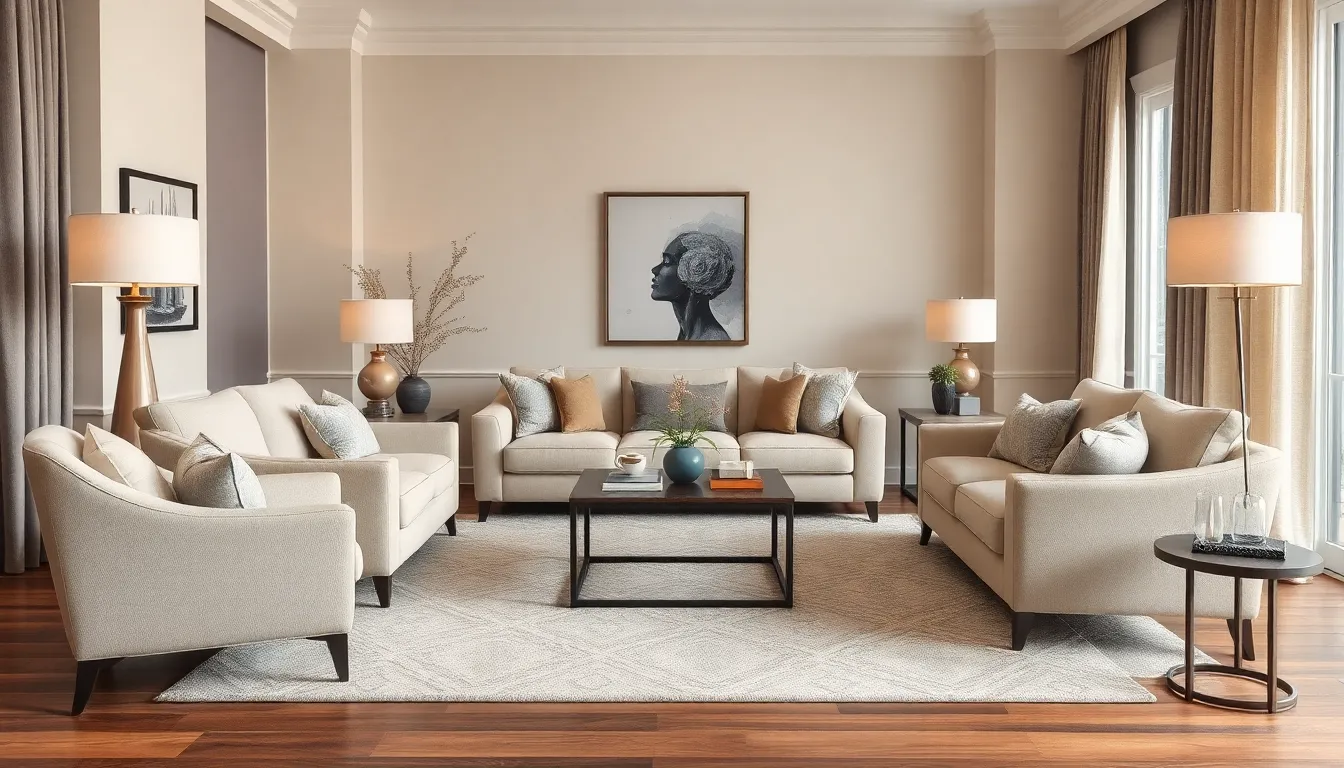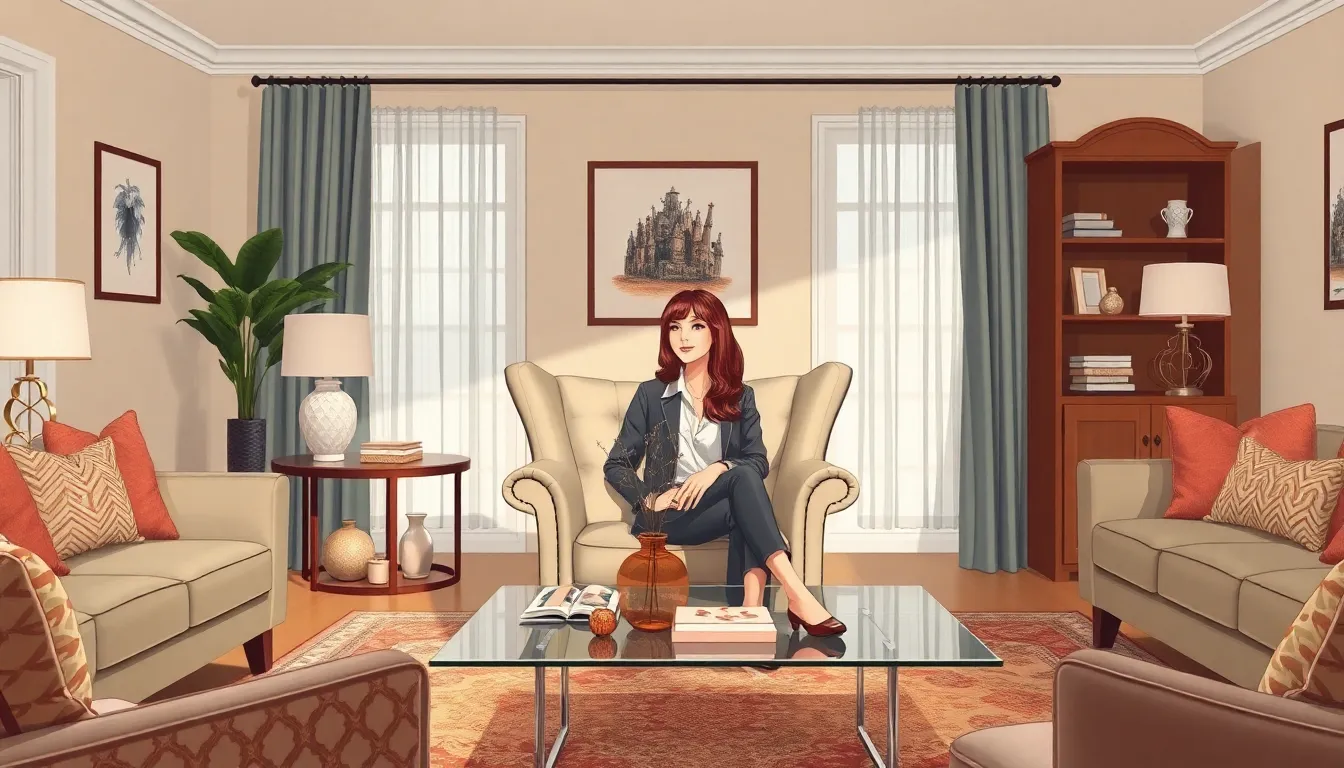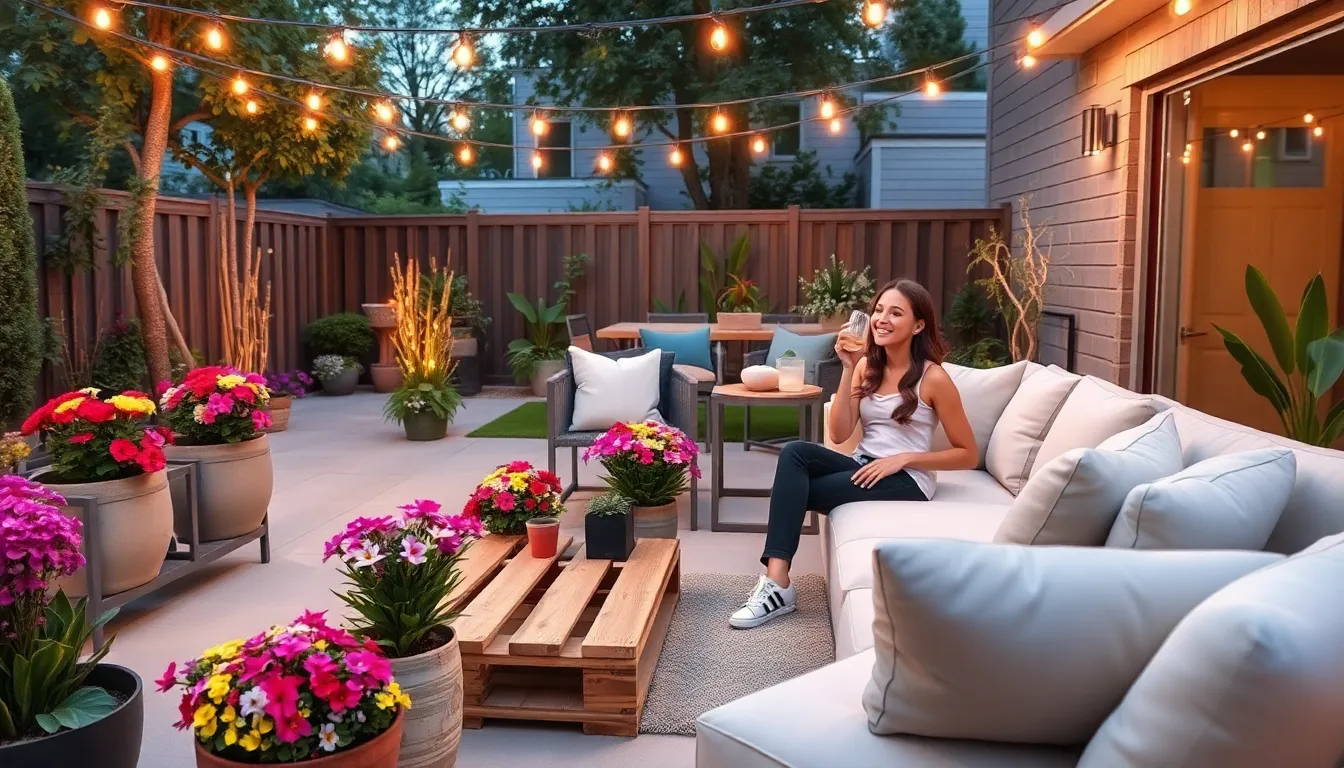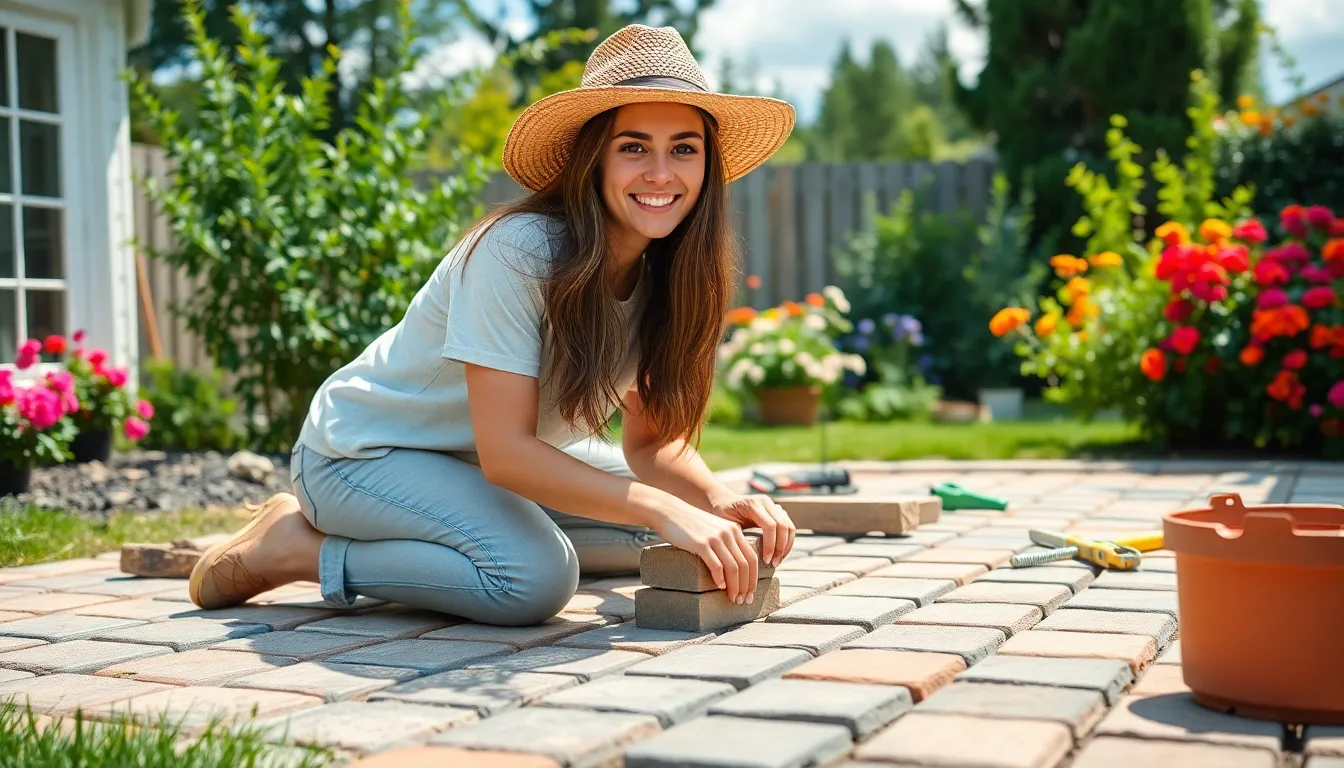Transitional design is like the stylish middle child of the interior design world—perfectly balancing the traditional and the contemporary. It’s the design equivalent of a well-tailored suit paired with trendy sneakers. This approach embraces classic elements while welcoming modern flair, creating spaces that feel both timeless and fresh.
Imagine walking into a room that feels like a warm hug from your grandma but with a sleek twist that makes you want to take selfies. That’s the magic of transitional design. It’s not just about aesthetics; it’s about crafting environments that reflect personal style without sacrificing comfort. So if you’re ready to ditch the old-fashioned and embrace the new, transitional design might just be your new best friend.
Table of Contents
ToggleWhat Is Transitional Design?
Transitional design seamlessly blends traditional and contemporary styles, resulting in spaces that feel both classic and fresh. This approach mixes elements from various eras, achieving balance and dynamism within interiors. It appeals to individuals seeking comfort and personal expression while updating their homes.
Key characteristics include neutral color palettes, streamlined furniture, and the incorporation of both vintage pieces and modern accessories. Designers often select fabrics that offer warmth without sacrificing sophistication. Textures play a crucial role, combining soft textiles with sleek surfaces to create visual interest.
Furniture selections focus on clean lines with gentle curves, promoting an inviting atmosphere. For instance, a traditional wingback chair paired with a sleek glass coffee table illustrates this opposing yet harmonious relationship. Lighting choices often showcase both statement fixtures and subtle ambient options, enhancing the overall aesthetic.
Incorporating transitional design involves blending various elements skillfully, ensuring each piece complements the others. Homeowners often prefer this style for its timeless quality, allowing them to update interiors without compromising comfort or familiarity. By choosing transitional design, they create spaces that evoke warmth and welcome while maintaining a modern edge.
Ultimately, transitional design offers a tailored solution for modern living, balancing traditional coziness with contemporary flair.
Key Characteristics of Transitional Design

Transitional design features several distinct characteristics that create a balance between traditional and contemporary styles. This blend of design elements results in spaces that feel both familiar and fresh.
Blend of Styles
Transitional design fuses aspects of traditional decor with modern elements. It embraces classic shapes while integrating current trends, allowing for versatility in styling. Mixing vintage pieces with contemporary accessories invites visual contrast, enriching the overall aesthetic. This harmony between old and new enables homeowners to express their unique tastes while maintaining a cohesive look.
Color Palette
Neutral color palettes dominate transitional design. Soft shades such as beige, gray, and taupe set a calming backdrop for the space. These understated tones create a sense of warmth without overwhelming the senses. Occasional bold accents add personality and interest, striking a balance that ensures the environment remains inviting yet stylish.
Furniture and Decor
Transitional furniture choices prioritize clean lines and gentle curves. Selections often include streamlined sofas paired with elegant armchairs, offering comfort without sacrificing style. Accessories play a key role, with decorative items complementing the overall theme without cluttering the space. This careful curation of furniture and decor fosters an inviting atmosphere perfect for relaxation and socializing.
Benefits of Transitional Design
Transitional design offers various advantages that appeal to homeowners looking for a stylish yet comfortable living space. Its unique features cater to both traditional and modern preferences.
Versatility
Versatility defines transitional design, enabling it to adapt to various personal styles. Homeowners can combine elements from different eras, creating a space that feels uniquely theirs. For instance, they might blend antique furniture with contemporary art pieces to showcase individuality. This flexibility allows for easy updates as trends change, making it suitable for both timeless settings and modern aesthetics. Accessibility is another benefit, as transitional design suits various environments, from urban apartments to suburban homes.
Timeless Appeal
Timeless appeal characterizes transitional design, connecting the warmth of tradition with modern sophistication. Neutral color palettes serve as calming backdrops, while bold accents introduce personality without overwhelming the space. Elements like clean lines and soft curves enhance the overall visual effect, creating inviting atmospheres perfect for gatherings. A well-designed space can maintain its relevance over time, regardless of evolving trends. Additionally, the careful selection of textures and materials promotes longevity, ensuring enduring beauty for years to come.
How to Incorporate Transitional Design in Your Space
Transitional design creates a unique blend of modern and traditional elements, making it easy to incorporate this style into any space. Focus on the following aspects for a seamless integration.
Selecting Furniture
Choose furniture with clean lines and understated designs to emphasize the transitional aesthetic. Mixing vintage pieces with contemporary items adds depth and character. For example, pairing a classic leather sofa with abstract art pieces can create a striking focal point. Prioritize comfort alongside style; opting for plush seating encourages a welcoming atmosphere. Accessories like throw pillows can introduce subtle patterns and textures without overwhelming the space.
Choosing Color Schemes
Opt for neutral color palettes as the foundation for transitional design. Soft shades of beige, gray, and taupe create a calming environment while allowing for personality through accent colors. Incorporating bold hues in smaller elements, like cushions or area rugs, offers a vibrant contrast. Aim for harmonious combinations to maintain overall cohesiveness. Mixing different tones preserves visual interest, ensuring the space feels fresh yet timeless.
Popular Transitional Design Inspirations
Transitional design finds inspiration in various styles, merging the old with the new. A popular choice includes pairing classic wooden furniture with sleek metal accents. Combining a rustic dining table with modern dining chairs offers a striking contrast.
Textiles also play a significant role in transitional spaces. Soft, plush area rugs complement streamlined furniture beautifully. They add warmth and comfort, reflecting a balance between traditional coziness and modern simplicity.
Color palettes form another important aspect of transitional design. Neutral tones serve as a foundation, allowing for easy integration of vibrant accents. Throw pillows in bold hues can inject personality while maintaining the overall aesthetic.
Artwork can bridge the gap between styles effectively. Mixing contemporary pieces with vintage frames creates visual interest. It draws attention while still harmonizing with other design elements.
Light fixtures often showcase transitional design principles prominently. Statement chandeliers can serve as focal points in a room, while subtle sconces offer ambient lighting. This combination enhances the overall atmosphere, inviting relaxation and conversation.
Outdoor spaces also benefit from transitional design inspiration. Combining classic patio furniture with contemporary decor elements fosters an inviting environment. Cushions and accessories in soft colors can tie everything together seamlessly.
In kitchens, blending traditional cabinetry with modern appliances proves effective. Open shelving allows for the display of curated items, adding personality to the space. This combination of functional design and aesthetic appeal creates a welcoming atmosphere for cooking and entertaining.
In each example, transitional design captures an elegant balance that appeals to many homeowners. It’s a style that encourages unique expression while maintaining a cohesive look throughout the home.
Transitional design stands out as a versatile choice for homeowners seeking a blend of tradition and modernity. Its unique ability to merge classic and contemporary elements creates inviting spaces that reflect personal style. By focusing on neutral palettes and carefully curated accessories, individuals can achieve a cohesive look that feels both timeless and fresh.
This design approach not only enhances the aesthetic appeal of a home but also promotes comfort and warmth. As trends evolve, transitional design remains adaptable, allowing for easy updates without sacrificing the essence of a well-designed space. Ultimately, it offers a perfect balance that resonates with many, making it an enduring favorite in interior design.





